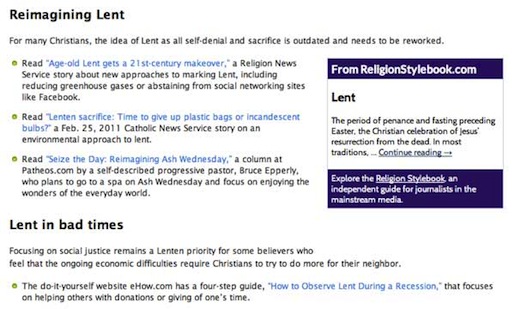Members of the church are called Mormons or Latter-day Saints; either is acceptable. It is preferable to use the church’s entire name, the Church of Jesus Christ of Latter-day Saints, on first reference. The LDS church has asked not to be referred to as the Mormon Church but does not object to adherents being referred to as Mormons. Mormon, LDS and Latter-day Saint can all be used as adjectives, as in Mormon beliefs or LDS practices.
The church was founded in 1830 by Joseph Smith, a farm boy in upstate New York. Smith said he was directed to a set of golden plates that contained a record of ancient inhabitants of the Americas who had migrated from Jerusalem. Smith said he translated this record with divine help and published it as the Book of Mormon. The book tells of a visit by the resurrected Jesus to these inhabitants in the Western Hemisphere, which is why its subtitle reads “Another Testament of Jesus Christ.”
Mormons believe that Smith had a vision of God and Jesus Christ and that the church he founded is the restoration of true Christianity. In the 19th century, Mormons were persecuted for their beliefs and eventually fled to Utah, where they could practice their faith in peace.
Because of their extra-biblical scriptures and beliefs about God and Jesus (they reject the Nicene Creed, for example), Catholic, Orthodox and Protestant churches do not regard Mormons as Christian. In stories where that is relevant, journalists should explain why Mormons regard themselves as Christian and why other groups say their beliefs do not accord with traditional Christianity. In stories where different faith groups are mentioned, journalists should avoid judging which groups are Christian. For example, say: Baptists, Mormons, Presbyterians, Seventh-day Adventists and Jewish groups took part in relief efforts rather than Baptists, Presbyterians, Seventh-day Adventists and non-Christians, including Mormons and Jews, took part in relief efforts.
The church has headquarters in Salt Lake City and is highly structured. All worthy males, 12 and older, can be ordained to the priesthood; women are not ordained but can serve in leadership and other positions in the all-volunteer clergy.
The top authority is the “prophet, seer and revelator,” a position held by the most senior apostle, who has the title of church president. He is joined by two counselors, who constitute the governing First Presidency. When the president dies, the First Presidency is dissolved and the senior member of the Quorum of the Twelve Apostles becomes the new president. Under the First Presidency is the three-member Presiding Bishopric, which governs in temporal affairs. There is also the First Quorum of Seventy, which oversees missionary work and other aspects of church governance.
The church is divided into territories called stakes, and each stake is headed by a president, two counselors and a stake high council. Individual congregations are called wards. The leader of a ward holds the title of bishop. The only formal titles in the LDS church are president for the head of the First Presidency, apostle, bishop and elder. Female leaders are called sisters. Capitalize all formal titles before a name on first reference, and only use the person’s last name on second reference. The terms minister and the Rev. are not used.

